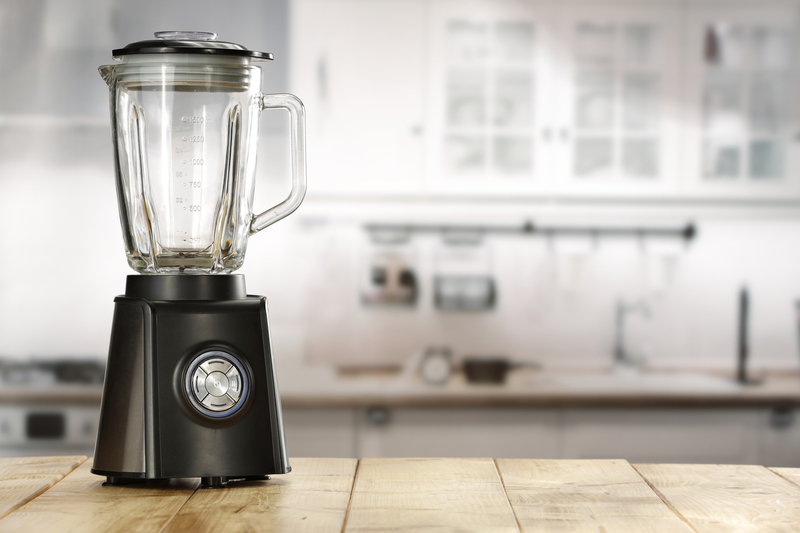How to Overcome the Challenge of Damp Smell
Posted on 30/05/2025
How to Overcome the Challenge of Damp Smell: A Comprehensive Guide
Have you ever walked into a room and been greeted by an unpleasant musty odor? That distinctive damp smell can be both irritating and embarrassing, especially if it lingers in your home. If you're searching for effective solutions to overcome the challenge of damp smell, you've come to the right place. This article will provide you with actionable steps, expert advice, and long-term tips to banish damp odors for good.

Understanding the Reasons for Damp Smell
The first step to efficiently dealing with the issue is knowing its source. A damp smell is usually a sign of excess moisture somewhere in your environment. This can lead to the growth of mold, mildew, or bacteria, all of which contribute to the unmistakable musty scent.
Common Causes of Damp Odors
- Poor Ventilation: Rooms that aren't well-aired trap humidity, which encourages mold and mildew formation.
- Leaking Pipes or Roofs: Undetected water leaks offer a perfect environment for persistent moisture and bacterial growth.
- Condensation: Inadequate insulation can cause water vapor to condense on walls and windows, leading to a clammy atmosphere and mildew.
- Flood Damage: Previous flooding incidents leave behind residual dampness that's tough to eliminate.
- Damp Basement or Crawl Spaces: These areas often have higher humidity and are susceptible to accumulating dampness.
Why It's Critical to Eliminate Damp Odor
The challenge of eliminating damp smell isn't just about comfort or aesthetics. Lingering damp odor can indicate deeper problems, including:
- Health Risks: Mold spores and mildew can worsen allergies, trigger asthma attacks, and cause respiratory irritation.
- Structural Damage: Persistent dampness fosters wood rot, weakens building materials, and accelerates property decay.
- Negative First Impressions: If you're selling or renting out a home, a musty odor can turn away potential buyers or tenants.
Effective Solutions to Overcome Damp Smells
1. Identify and Eliminate the Source of Moisture
Overcoming damp smell starts with stopping moisture at its root. Search thoroughly for any of these common sources:
- Check under sinks, behind toilets, and in the laundry for leaky pipes.
- Inspect attics and basements for signs of water intrusion or condensation.
- Look for cracks in the foundation, broken roof tiles, or clogged gutters.
Tip: Use a moisture meter to detect hidden damp areas.
2. Remove Existing Mold and Mildew
Once you've dealt with the source, you'll need to tackle any mold or mildew already present. Here's how:
- Wear protective gear such as gloves and masks to prevent exposure.
- Mix a solution of one part bleach to four parts water, scrub the affected areas, and then rinse clean.
- For delicate surfaces, use vinegar or baking soda as natural alternatives.
- Always dry the area thoroughly after cleaning.
Remember, extensive mold infestations may require professional remediation.
3. Improve Ventilation and Air Circulation
One of the best ways to overcome a damp smell problem is to keep air moving throughout your home. Consider:
- Opening windows and interior doors regularly to invite fresh air in.
- Using extractor fans in kitchens, bathrooms, and laundry rooms.
- Placing oscillating fans to encourage air circulation, especially in closed-off areas.
- Installing trickle vents in window frames for constant background airflow.
4. Use Dehumidifiers and Moisture Absorbers
Lowering humidity is crucial for overcoming persistent damp odors. Here are effective options:
- Plug-in dehumidifiers for living areas and basements that keep humidity between 30-50%.
- Desiccant packs (such as silica gel) in enclosed spaces like closets and wardrobes.
- Charcoal bags and baking soda containers to neutralize musty smells naturally.
5. Deep Clean and Refresh Soft Furnishings
Upholstery, carpets, curtains, and bedding can absorb and hold onto bad odors. To ensure you get rid of them:
- Steam clean or launder removable fabrics and allow them to dry fully in the sun.
- Sprinkle baking soda on carpets and let sit overnight before vacuuming to remove trapped dampness.
- Use fabric sprays with antimicrobial properties to neutralize odors on soft furnishings.
Natural Remedies to Remove Damp Odors
Harnessing the Power of Houseplants
Certain plants like peace lilies, spider plants, and English ivy are known to purify indoor air and reduce levels of airborne mold spores. By decorating your home with these natural air cleansers, you're not just beautifying your space--you're making it fresher and more inviting too.
DIY Natural Air Fresheners
- Place bowls of white vinegar around musty rooms to absorb lingering smells.
- Make your own orange-peel sachets or lavender pouches to gently infuse the air with freshness.
- Simmer a pot of water with lemon slices and herbs to naturally deodorize the house.
The Value of Sunlight and Fresh Air
Never underestimate the simple power of sunlight. Rugged fabrics, mattresses, and even furniture can benefit from being placed outside in direct sunlight for a few hours. UV rays naturally kill bacteria and mold spores, and fresh air helps carry away lingering scents.
Specialized Products to Eliminate Damp Smell
Commercial Odor Neutralizers
There are numerous specialized products available that are designed to combat persistent dampness and odors:
- Activated charcoal-based air purifiers effectively absorb both moisture and smells.
- Enzyme-based sprays break down odor-causing molecules rather than masking them.
- Anti-microbial paints can prevent mildew formation on walls and ceilings in high-humidity areas.
Mold and Mildew Resistant Products
If your area is prone to damp conditions, consider investing in:
- Damp-proof membranes for basement or crawl space floors and walls.
- Mold-resistant drywall and moisture-repellent paint for bathrooms and kitchens.
- Breathable moisture barriers behind wall coverings to minimize condensation.
Long-Term Prevention Strategies
Routine Maintenance Checks
- Inspect plumbing and roofing for leaks at least twice a year.
- Clear gutters and downspouts to prevent water overflow and seepage.
- Seal cracks in exterior walls and foundations promptly.
Consistent Humidity Control
- Use programmable dehumidifiers during wet weather or in humid climates.
- Monitor humidity levels with digital hygrometers to ensure they remain in the ideal range.
- Position furniture away from walls to allow air to circulate around and behind large items.
Seasonal Deep Cleaning
- Wash, dry, and rotate curtains, blankets, and rugs frequently.
- Regularly clean behind heavy furniture and in corners where air flow is limited.
- Declutter storage spaces to ensure they remain aerated and dry.
When to Call a Professional
Sometimes, the problem with damp smell runs deeper than DIY methods can address. It's time to call a pro if you notice:
- A persistent, overpowering musty aroma despite cleaning and ventilating.
- Visible black, green, or brown mold patches that keep returning.
- Symptoms of ill health connected to poor air quality among household members.
- Signs of significant structural issues due to long-term water damage.
Conclusion: Conquering the Challenge of Damp Smell
Overcoming the challenge of damp smell requires a holistic approach: identifying the source of dampness, eliminating bacteria and mold, improving ventilation, and making lasting changes to your daily routine. Whether you use natural remedies, specialized commercial products, or call in professionals, you can create a fresher, healthier, and more appealing living space. By putting these expert strategies into action, you'll not only banish unpleasant odors--you'll prevent them from returning in the future. Embrace these solutions and enjoy the clean, invigorating aroma of a truly dry and welcoming home.

FAQ: All About Damp Smell Control
Q: How long does it take to get rid of damp smell at home?
A: The timeframe depends on the severity of the issue. Minor cases improve within days after treatment, while serious moisture or mold problems may take weeks (or professional assistance) to fully resolve.
Q: Is it safe to use bleach to remove damp odors?
A: Yes, but always dilute bleach properly, wear protective gear, ventilate the area, and never mix it with ammonia or other chemicals.
Q: What is the best way to keep closets and wardrobes odor-free?
A: Place silica gel packs or activated charcoal bags inside, avoid overcrowding, and open doors regularly to improve airflow.
Q: Are air fresheners an effective solution for damp smell?
A: Most air fresheners only mask odors temporarily. For lasting results, address the source of moisture and eliminate mold first before using air fresheners for added scent.
Resources
With commitment and the right approach, you can finally overcome the challenge of damp smell--for good!




